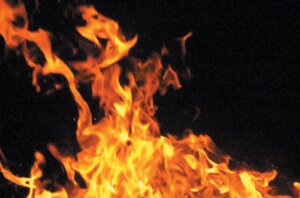| Understanding the basics of Lag Ba'Omer |

|

|
|
Lag Ba’omer is a ‘minor’ holiday celebrated on the 33rd day of the counting of the Omer. Lag Ba’Omer is actually a shortened way of refereing to exactly that, the thirty-third day of counting the Omer. The period of the counting of the Omer, the forty-nine days between the second day of Pesach and Shavuot, is a mournful period. It directly links the freedom from bondage in Egypt with our ultimate redemption and the receipt of the Torah.
The omer is a specified measure of grain required for offering. While the offering is no longer required since the destruction of the Temple, many Jews still observe the custom. Rituals are followed and special prayers are recited each day during the omer period, but modern technology now provides a host of creative ‘omer counters’ relying on the latest in technology: SMS messages. Despite the innovation, weddings and other celebrations, as traditionally observed, are still forbidden and religious Jews will not have their hair cut, a custom associated with mourning. On the thirty-third day of the Omer, there is however a day to celebrate, Lag Ba’omer. It is one of the few days of the period that weddings are permitted. The mourning period is also suspended to allow modern Jews to participate in festivities to mark Yom Ha’atzmaut. Lag Ba’omer commemorates a historic event in Jewish history. In the time of Rabbi Akiba (50-137 CE) a mysterious plague took the lives of 24,000 of his students as it is written in the Babylonian Talmud. The plague ended on thethirty-third day of the Omer. The holiday, in part, commemorates the students and celebrates the end of the plague, the day was set aside. Additionally, in 66 CE, the successful revolt against Rome also began on that same day, led by Bar Kochba. The signifi cance of Lag Ba’omer however goes beyond its historic foundations and also ties in a mystical and spiritual association with the day. It is recorded as the day in which Simeon Bar Yochai died. Bar Yochai was the mystic credited with authorship of the Zohar. Jews visit his grave in Meron to mourn his death on this day as well.
Many Jews hold weddings on this day and numerous traditional Jews select this day to hold Upsheren or fi rst hair cut of three-year old boys. It is a day of great celebration and lifecycle events and an end to a thirtytwo day period of mourning. For secular and religious Jews alike, in Israel, it is a day of outings in nature and often marked by joyous picnics and giant bonfi res. Children also go to the fi elds with their teachers with bows and arrows in hands, reminiscent of the militaristic routes of the holiday during the revolt against Rome. Tachanun, or the prayer for special Divine Mercy on one’s behalf, is recited on this day. In Israel, at Meron, the burial place of Rabbi Shimon bar Yochai and his son, Rabbi Elazar b’Rabbi Shimon, thousands of Jews gather to celebrate on the Yahrtzeit, the anniversary of the death of this Tannach. The observers mark the day with torches, song and feasting, as specifi cally requested by Bar Yochai of his students. The holiday is one that upon deeper exploration delves into the hopes and promises of Messianic redemption. It links together our freedom from slavery with our ultimate redemption.
|



















